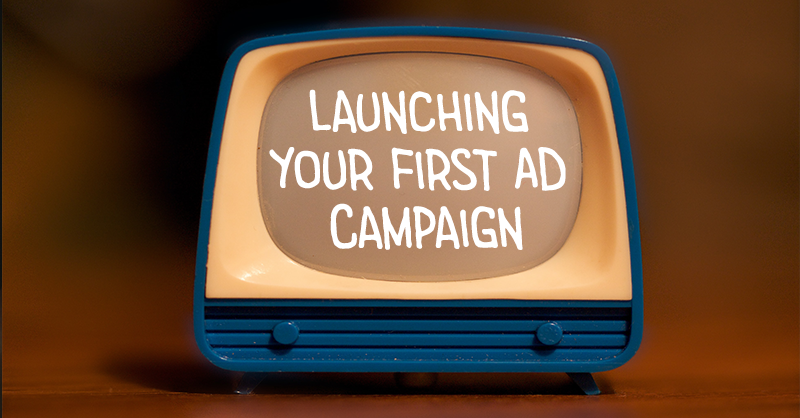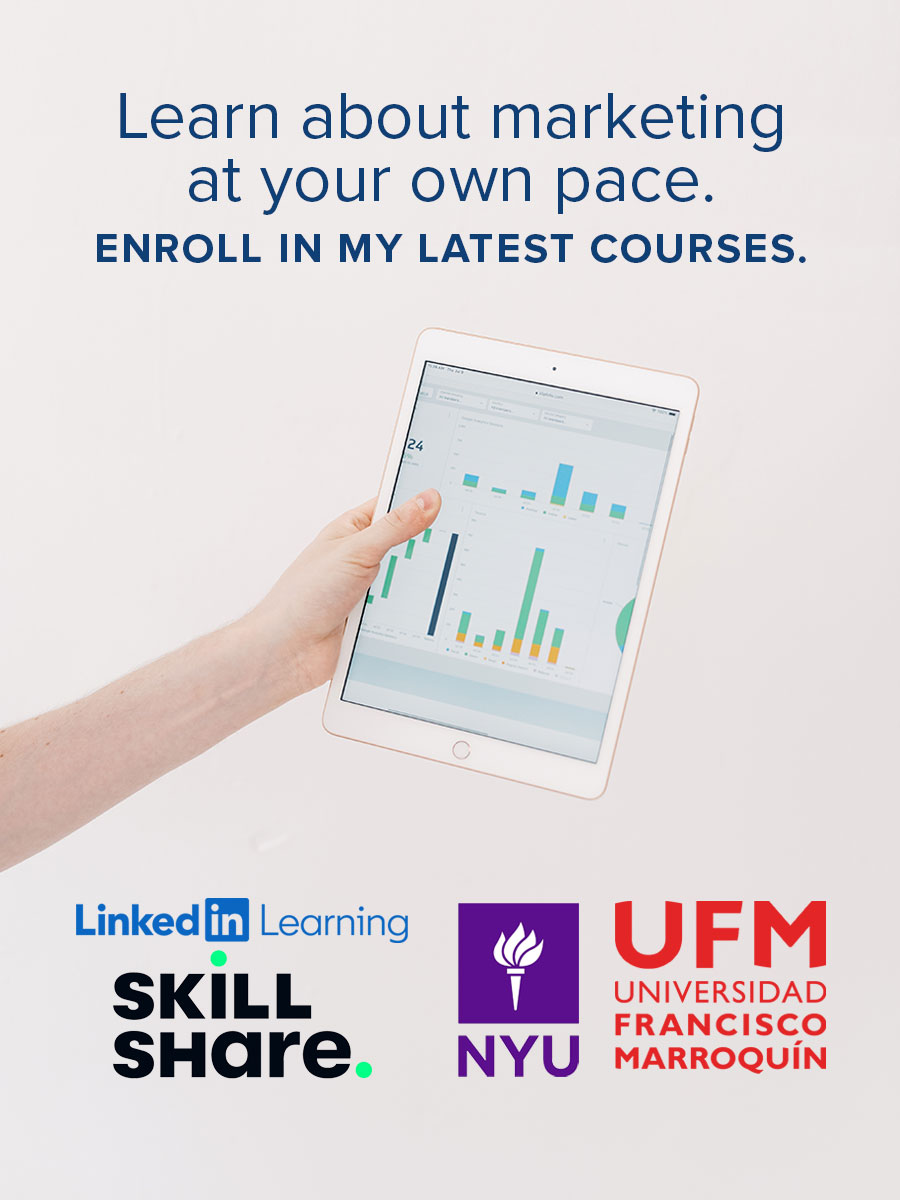
When you publish an ad, there is always a risk that it won’t work.
Launching your company’s very first advertising campaign tends to be one of the riskiest and stressful investments you’ll commit to as there isn’t a precedent to follow.
Your first ad campaign will not only help set the tone with customers but will be closely monitored by company leadership trying to gauge the impact advertising can have.
To offset this pressure, recognize that marketers that develop a strategy to plan their ad campaigns are 356% more likely to see results from their efforts.
Proactively planning a TV commercial back in 2008 helped Progressive Insurance establish its brand and unexpectedly create Flo, the company’s mascot.
The initial strategy for this ad was to showcase a superstore where people could easily shop for insurance, as a way to make their offerings more tangible to customers.
Focusing the campaign on what would connect with their customers and humanize the firm, the spotlight moved from the store to their now popular brand ambassador.
Progressive set the stage for a lasting campaign that’s kept the company relevant for over a decade — increasing revenue from $13.6 billion in 2008 to over $35 billion today.
By setting expectations for the campaign, focusing on their customers’ needs, sharing a value-driven message, and being mindful of the medium, the ad was a big success.
And it’s possible for your organization to earn results on your first big campaign by strategically planning the process with your goals and customers in mind.
Set realistic expectations
It’s helpful to consider your first ad campaign as the start of a series of investments in advertising for the long-term until you pinpoint what approach drives results.
“You need to understand that you’re not going to get optimal ROI until you do it for a while,” says Neal Schaffer, marketing consultant and author of The Age of Influence.
Incremental results should be the aim of your first campaign, as it’s uncommon to make a significant impact until you’re able to experiment to learn what resonates first-hand.
“Incremental daily progress (negative or positive) is what actually causes transformation,” says Seth Godin, a leading marketing speaker and author.
Whether a series of Facebook ads or an out-of-home campaign, each ad will provide your team with data and insights to inform future changes to your approach.
That’s how Intuit improved their advertising initiatives by learning from their first ad campaign’s performance across TV, YouTube, Instagram, Facebook, and Snapchat.
Focused on earning awareness and consideration for their ecosystem of financial software, the campaign earned 25 million online views and increasing brand awareness by 17%, according to a YouTube brand lift survey.
With these results in mind, the company decided to focus their next ad campaign on storytelling across digital channels as a first priority, according to a CMO interview with Lauren Stafford-Webb, a marketing executive leading the campaign at Intuit.
Beyond experimenting to improve the results of your campaigns in the long-term, an immediate consideration to understand is what budget you’re able to allocate initially.
The exact cost will depend on the ad’s objective and the profitability of your business.
“Brand awareness at the very beginning is a great strategy,” but most firms focusing their first campaigns in this manner tend to be funded by venture capital, says Schaffer.
For most organizations that are self-funded with a tighter budget, it’s a better approach to focus on direct response — messaging that earns an immediate reaction at the start.
“You want to be looking for more impactful messaging that brings potential customers into your marketing funnel quickly,” adds Schaffer.
Encouraging a purchase, a sign-up or an offer redemption is a cost-effective objective for a campaign initially as you can choose to only pay for conversions from the ad.
Launching a direct response campaign has never been easier using ad platforms from Google, Facebook, LinkedIn, and others, but with this ease comes more competition.
Empathize with your customers
The key to differentiating your campaign from others is targeting the right people.
“We’ve all been on the wrong end of poor segmentation, meaning that the message was not relevant to us,” says Andrew Garberson, SVP of Marketing Services at Bounteous, a digital agency.
This is often the result of failing to be strategic with who you’re trying to reach and neglecting to take the time to empathize with your customers.
No one enjoys seeing a retargeting ad from a company right after you’ve made a purchase with them or seeing an ad for an item that’s out of season, says Garberson.
Avoid offering ad experiences like these and instead, think critically about the interactions customers have with your messaging to be a more empathic advertiser.
By researching who your customers are, what they do, and why they do it, you’ll be able to craft more personalized, less intrusive messaging that encourages the right actions.
In addition, conducting this research can help your company distinguish its messaging as less than 40% of marketers are making decisions based on consumer research.
Surveys, diary studies, and focus groups are effective methods of collecting these insights from your customers directly, known as primary research.
There are affordable ways of gaining these insights in a short period of time through services like UserTesting, dscout, Hotjar, and SurveyMonkey.
Like how the team at Wrike, a work management software, used SurveyMonkey to collect survey data on swearing in the workplace in two days to inform their new study.
The 1,120 collected responses helped the company produce a research study informed by consumer insight, and as a result, earned over 100 pieces of press coverage.
And there are also time consuming and costly processes for conducting customer interviews, usability testing, and similar techniques to gain deeper customer insights.
For example, Pepsi spent nine months researching how its customers’ viewed the brand ahead of the launch of their first global campaign.
An alternative approach is to inform your messaging initially with secondary research, which are insights gathered by third parties about different industries and customers.
Available to purchase from large research companies and often accessible for free from government agencies, reviewing these insights can save you time ahead of a launch.
Choose a value-driven message
With the right customers in mind, it’s time to craft the right message for your campaign.
The message describes the themes you’ll address in each advertisement to encourage action from customers.
Focusing on your values is always a strong starting point as it’s a more interesting conversation starter than solely promoting your offerings, says Schaffer.
For instance, the first national ad campaign from Thinx, the period proof underwear brand, featured a fictional world where men have periods in everyday scenarios.
The commercial, airing on eighteen television networks and in audio segments across podcasts and Spotify, ended with the line “If we all had periods, would we be more comfortable talking about them?”
Instead of touting the benefits of their product, the brand focused their message on destigmatizing menstruation and only showcased their underwear at the end of the ad.
Starting a conversation as it relates to the brand’s values made the ad far more memorable, while still closely aligning with the interests of their ideal customers.
Leading with your organization’s values when possible is essential as “more than half of consumers said it is important for companies to have a mission beyond making a profit”, according to a PRWeek and Morning Consult poll.
The values expressed in your campaigns won’t always reflect social causes as sometimes they’ll highlight how your company operates or the solutions you provide.
This is best seen in the series of playful videos and out-of-home placements that Olly, the nutritional gummy brand, released visualizing the solutions their products provide.
One ad features a person tossing and turning, removing numerous sleep masks and then finally falling asleep with the help of Olly’s sleep gummies.
Another shows a person wrapped in a giant ball of string to symbolize their stress level, until they completely unwind after taking the brand’s stress gummies.
Highlighting the solutions Olly’s products offer to common challenges makes for a straight-forward campaign that isn’t overly promotional.
When depends on what and where
“My client’s best ad campaigns stand on three legs: the right person, the right message, and the right time,” says Garberson.
And each of these ‘legs’ informs the other as what message your campaign is focused on and where it’ll be distributed should inform when your customers see the ad.
For instance, Pinterest launched its first ad campaign focused on the message of “What If” to illustrate the variety of ways people can use the social network to try new things.
The goal was to earn brand awareness, highlight different use cases of the service, and showcase the company’s values around taking action and trying things offline.
With that message in mind, TV commercials and billboard advertising seemed like the right channels for showcasing the campaign offline.
In addition, the campaign was featured in native ads in the New York Times and Mic to reach potential users across different channels.
Each of these choices impacts their team’s decision on when to publish the campaign to ensure its message reaches the right people at different touch points simultaneously.
“You have to realize it takes multiple touches until someone likes, knows and trusts you enough to actually buy your products,” says Schaffer.
While advertisers often aim to reach their customers with a campaign across different channels throughout the duration of an initiative, there is no ideal timeline to follow.
Sometimes the channels and tactics being used to distribute a campaign can help an organization reach audiences months after the initial launch of an advertisement.
For example, partnering with influencers can drive long-term visibility for a campaign.
An influencer’s content often has a longer lifespan than a traditional ad spend, says Schaffer, the author of The Age of Influence.
These influencers are more trusted by consumers and the content from individuals is often favored by the algorithms, he adds.
For over three years, Pampers has partnered with Chrissy Teigen, a model and TV personality, to promote their Pure Collection of eco-conscious, fragrance free diapers.
Taking part in the design of their products, starring in the campaigns, and sharing her participation across social media, the model and TV personality drives long-term awareness to the product line and the values behind the campaign.
Due to the longevity of the campaign, when it is promoted depends on the channel, new updates about their products, and ensuring they’re not promoting it too much.
While not every campaign is meant to be promoted or extended for the long-term, influencers are one approach to maintaining the momentum, especially since 89% of advertisers report the ROI of influencers is “comparable or better than other channels.”
Deciding when an ad campaign is best served to customers ultimately depends on who you’re trying to reach with a particular message and which channels are the right match.
Stay mindful of shifts in consumer behavior
Regardless of when you plan to launch your first campaign, it’s important to understand current trends in advertising, as well as consumer behavior in your industry.
Being aware of what’s relevant in the marketplace will provide insights into the most effective ways of structuring and positioning your advertisement for success.
For example, the streaming service Twitch featured the platform’s top creators in the company’s first advertising campaign as influencers are a topic of interest in 2020.
Consider what topics are most relevant to your audience at the moment and relate to your organization to naturally align your advertising with important conversations.
In addition, recognize that the channels your customers prefer to access for entertainment, news consumption, communicating with loved ones, and job-related tasks will always be in a state of flux.
While certain channels will continue to be a worthwhile investment, it’s important to reassess how you’ll distribute your campaign at any given time for maximum impact.
Recognize that every campaign involves a level of uncertainty, but by following these guidelines — the success you’ll achieve with your ads will far outweigh the risks.
What’s your favorite advertisement to date and how could you incorporate aspects of that ad into your own campaign? Please share in the comments.


